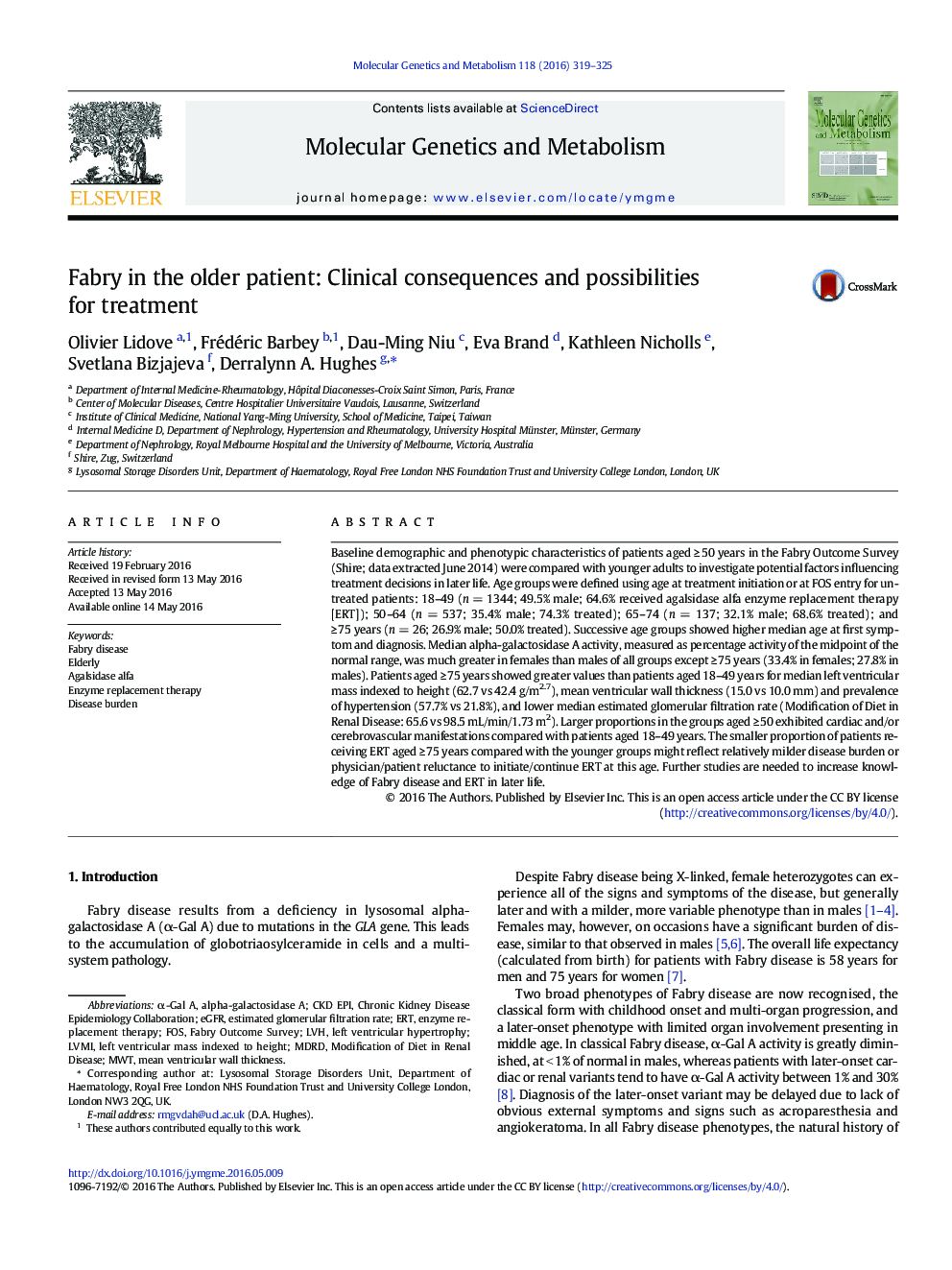| کد مقاله | کد نشریه | سال انتشار | مقاله انگلیسی | نسخه تمام متن |
|---|---|---|---|---|
| 5514042 | 1400693 | 2016 | 7 صفحه PDF | دانلود رایگان |
- A smaller proportion aged â¥Â 75 than < 75 years received enzyme replacement therapy.
- Not all elderly patients who are eligible are receiving enzyme replacement therapy.
- The value of enzyme replacement therapy in the elderly needs further investigation.
Baseline demographic and phenotypic characteristics of patients aged â¥Â 50 years in the Fabry Outcome Survey (Shire; data extracted June 2014) were compared with younger adults to investigate potential factors influencing treatment decisions in later life. Age groups were defined using age at treatment initiation or at FOS entry for untreated patients: 18-49 (n = 1344; 49.5% male; 64.6% received agalsidase alfa enzyme replacement therapy [ERT]); 50-64 (n = 537; 35.4% male; 74.3% treated); 65-74 (n = 137; 32.1% male; 68.6% treated); and â¥Â 75 years (n = 26; 26.9% male; 50.0% treated). Successive age groups showed higher median age at first symptom and diagnosis. Median alpha-galactosidase A activity, measured as percentage activity of the midpoint of the normal range, was much greater in females than males of all groups except â¥Â 75 years (33.4% in females; 27.8% in males). Patients aged â¥Â 75 years showed greater values than patients aged 18-49 years for median left ventricular mass indexed to height (62.7 vs 42.4 g/m2.7), mean ventricular wall thickness (15.0 vs 10.0 mm) and prevalence of hypertension (57.7% vs 21.8%), and lower median estimated glomerular filtration rate (Modification of Diet in Renal Disease: 65.6 vs 98.5 mL/min/1.73 m2). Larger proportions in the groups aged â¥Â 50 exhibited cardiac and/or cerebrovascular manifestations compared with patients aged 18-49 years. The smaller proportion of patients receiving ERT aged â¥Â 75 years compared with the younger groups might reflect relatively milder disease burden or physician/patient reluctance to initiate/continue ERT at this age. Further studies are needed to increase knowledge of Fabry disease and ERT in later life.
Journal: Molecular Genetics and Metabolism - Volume 118, Issue 4, August 2016, Pages 319-325
